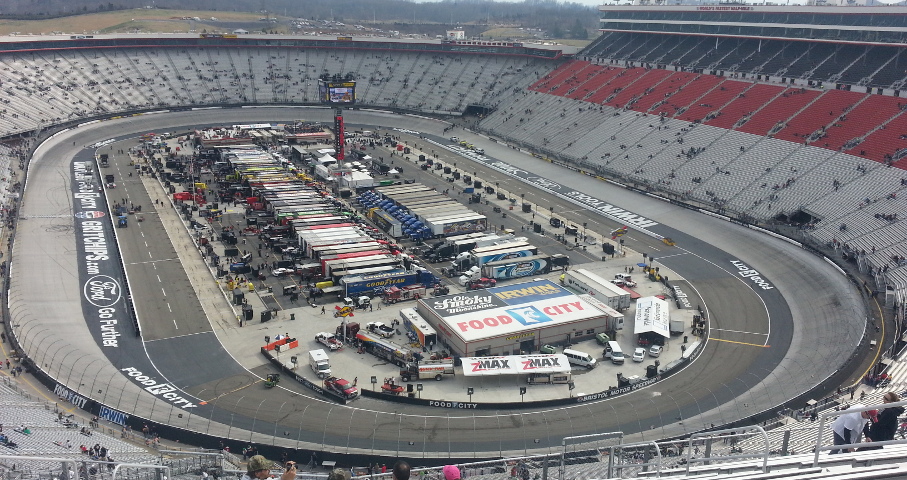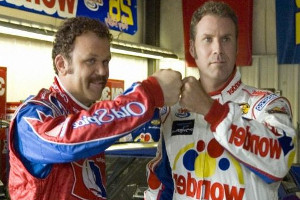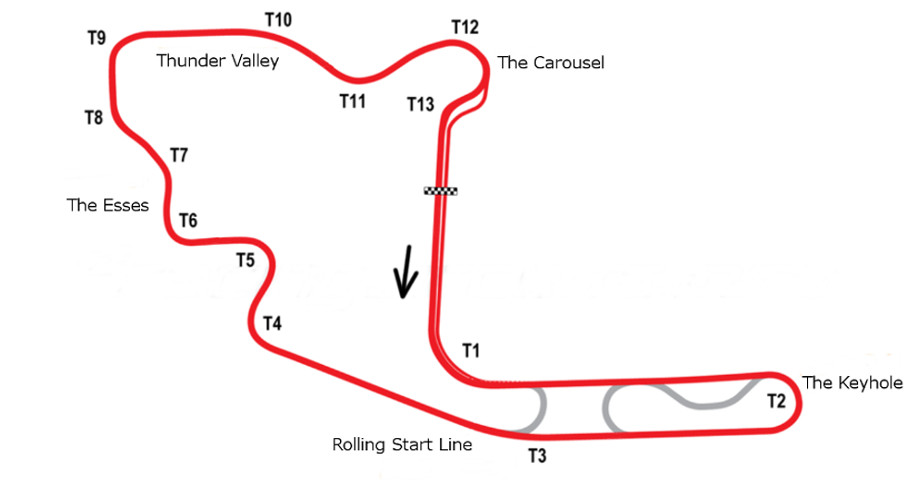NASCAR Racetracks 101: What to Know About Racetracks When Betting
NASCAR Racetracks. When handicapping a NASCAR race, there are many different factors to consider, among them the track where the race is taking place.
The layout and conditions of the track are something which a novice might overlook, because at a glance, many NASCAR tracks appear to be almost completely identical.
Common Misconceptions
In fact, there is a common misconception that NASCAR tracks are identical. But they are not. In fact, you will find that they can differ in quite a few respects.

The Bristol Racetrack, located in Bristol(!), Tennessee.
In this guide, we will discuss the different features of NASCAR tracks and how they can affect a race.
This will help you ask yourself the right questions about a racetrack when you are handicapping a NASCAR event.
First, a super quick recommendation of the best places to place your NASCAR wagers. Just click on any of these names to learn more about these sportsbooks!
Bovada –
One of the most US friendly sites out there, as long as your state lets you decide what to do with your money!
Not only will you find NASCAR options, but all of the other auto sports as well, (you’ll have to click “All Sports” and then “Motor Sports”).
Their welcome bonus is usually a 100% match up to $250 for the sportsbook, but for a limited time that has been increased to $1000 if you use the code BVNFL1000 when making your deposit!
BetOnline –
Another one where you have to “search” for the races by clicking “Other Sports”, “Auto Racing” and then “Motor Sports”, but that’s just the way it is. If you’re here, you probably love NASCAR, doesn’t change the fact that it isn’t the biggest name in sports wagering. Let’s work on changing that!
Right now at BetOnline you can get 5% above market price if you use bitcoin to make your deposit!
MyBookie –
You don’t have to really search to find the motor sports at Mybookie. They’re just listed there in the main menu with everything else they have to offer.
Not only will they give you a match up to $1000 on your first deposit, but make sure you also check out all of their casino bonuses as well with different bonuses going on every day of the week!
NASCAR Racetrack Sizes
Note all that NASCAR racetracks are not the same length. Some tracks are under a mile, while others may be more than 2 miles.
In fact, they can be categorized accordingly:
Short Tracks
These are NASCAR tracks that are less than a mile long. Another name for them is bullrings. Usually, NASCAR drivers get started on these tracks before progressing to those which are longer. As a spectator, you will discover that races which take place on short tracks can be filled with edge-of-your-seat excitement because of how tight the action is. The Martinsville Speedway is the shortest short track on the Monster Energy NASCAR Cup Series. Its length is 0.526 miles.
Mile Oval Tracks
The name of this type of track describes both its length and it shape. It must be an oval (more on track shapes in just a bit), and it must measure one mile (give or take a tenth of a mile) in length. These tracks are relatively flat compared to some others which may feature steeper banking.
Intermediate Tracks
Tracks which are longer than a mile but not long enough to be considered superspeedways fall into the category of “intermediate” tracks. They are banked more steeply than mile oval tracks. The most typical length for an intermediate track is 1.5 miles. Sometimes, you will hear them referred to as “cookie-cutter” tracks because of how alike they tend to be.
Superspeedways

Shake’n’Bake, baby…
Finally, if a NASCAR track measures 2 miles or longer, it is a superspeedway. These tracks feature the steepest banking. The longest superspeedway is the Talladega Superspeedway. It is 2.66 miles long.
Now you are aware of how different tracks are classified in NASCAR according to their lengths. If you see a track being referred to as an intermediate track or a short track, you will know what that means. But how does the track length affect the experience and performance of the driver?
Answering this question is as simple as thinking about your own driving experiences. When you hit a long straightaway on the road, it’s easy to control your vehicle at higher speeds.
The same applies to a NASCAR track. Those which feature long straightaways allow drivers to speed up.
Moving On
This is why superspeedways are known as such. Drivers can safely speed up on their lengthy straightaways. They can also maintain higher speeds around the curves, which are not as tight as they are on shorter tracks. They are also banked more steeply, as mentioned previously. We will talk more about banking later.
One more thing to know about track length is that even at a single raceway, it can vary.
How does that work? Some tracks include multiple options for racing. There may be a full circuit as well as a short circuit.
Sometimes the full circuit might be used, while other times the short circuit might be put to use.
It is important to check which circuit the drivers will be racing before you place wagers.
The same driver who might have a difficult time completing the full circuit for a track could excel at the short version, or vice versa.
NASCAR Racetrack Shapes
If I ask you to imagine a NASCAR racetrack right now, you would probably picture an oval, correct?
The oval is certainly the most common and well-known shape for a NASCAR racetrack. But not every NASCAR racetrack is an oval.
Some NASCAR racetracks actually have some very distinctive shapes. If you are not aware of this, these tracks could throw a few more curves your way (literally) than you expect.
For example:
Mid-Ohio Sports Car Course
Included in the NASCAR Xfinity Series, the Mid-Ohio Sports Car Course includes an astonishing 15 turns. The track length is 2.4 miles. The most famous of terms is the “Keyhole”. Pulling around this tight curve, drivers had back in the direction in which they just came. But this curve doesn’t slow down the action for long. Because this track is a superspeedway with long straightaways, speeds of up to 180 mph can be achieved on certain sections.

The Mid-Ohio Sports Car Course. Impressive? Sure, but it’s got nothing on Atlanta’s Spaghetti Junction!
Sonoma Raceway
This is a mountain track measuring 2.52 miles and containing 12 turns in all. It is also noteworthy for its elevation difference of 160 feet between the lowest and highest points on the track.
The Pocono Raceway
This is often referred to as The Tricky Triangle. As described by that name, the shape of this track is essentially a triangle with curves instead of points. It is a superspeedway, measuring 2.5 miles, but it has unusually flat banking. It is a track where quite a bit of shifting takes place.
As you learn more about NASCAR tracks, you will discover that there are some others which also feature shapes that are nothing like an oval.
Just as a non-oval track can throw you off, it can also throw off drivers. Imagine, for example, that a relatively new stock car racer whose career to date consists primarily of oval short tracks suddenly needs to do a race on the Sonoma Raceway.
However impressive that driver’s recent record might be, there will likely be a noticeable decline in performance as he struggles to navigate the curves and elevation changes of the Sonoma Raceway.
Similarly, if he is up against a driver who has performed well on that same track in the past, that opponent could have an advantage when placed on the Sonoma Raceway. This could even be the case if his recent record hasn’t been so great on other tracks.
NASCAR Racetrack Elevation
As just discussed with reference to the Sonoma Raceway, some tracks are actually “hilly”. As you should know from your own driving experiences, elevation change, like curves, can make it harder to control a vehicle. If a track has many elevation changes, that can make it more challenging, especially for those who are used to driving on flat roads.
One track which is especially infamous for its elevation changes is the ISM Raceway. This track measures 1 mile, and features a combination of elevation changes and a tight turn known collectively as the “dogleg”. NASCAR racers sometimes liken it to riding a roller coaster.
NASCAR Racetrack Materials
In the past, there were three materials used to create NASCAR racetracks. These were dirt, asphalt, and concrete.
Dirt is no longer in use because it reacted too much to the weather and the paths that drivers took. A dirt track could perform significantly differently at the start and end of a race.
As a result, NASCAR discontinued dirt racetracks completely, opting instead for concrete and asphalt tracks.
When the goal is to save money while a track is under construction, typically, asphalt will be used rather than concrete.
But when a track is laid with the long view in mind, concrete may be selected instead of asphalt since it offers higher longevity.
There still a downside for concrete, however, in terms of maintenance. When concrete needs repair, it can be a time-consuming and expensive activity.
Asphalt, on the other hand, can be rapidly and affordably repaired. This, together with lower initial installation costs, is probably responsible for why it has become the material of choice for many racetracks today.
Th Difference Between the Two
The two materials can react differently to both the climate and the racing. In hot conditions, the dark color of asphalt will cause it to absorb heat more readily than concrete.
Asphalt also contains tar as a component, which can melt. When it is very hot, the top of an asphalt track can soften, giving it a somewhat greasy consistency.
That means that driving on very hot asphalt can be a little bit like driving in the rain in that the slickness can make it harder to maintain control at high speeds or around turns.
There are two other differences worth noting when it comes to comparing asphalt and concrete tracks.
For one, is more fuel efficient to drive on concrete than it is to race on asphalt.
For another, traction on asphalt is superior to traction on concrete. Of course, this also depends on whether conditions, as previously discussed.
So both materials have their pros and cons when it comes to maintenance and racing.
Need to know more about Bovada first? Check out this link.
NASCAR Racetrack Conditions
There are several factors which can impact the conditions of a specific racetrack:
- Weather
- State of Repair
- Driving
We have already talked about how hot weather can cause an asphalt track to become a bit greasy and slippery.
Not much needs to be said about wet tracks. You almost certainly have plenty of experience driving on wet roads yourself, and are already aware that it is easier to skid on both concrete and asphalt when it is wet.
If the road is in need of repair, you also know that that can cause traction issues and unpredictable situations while driving. That is true for racetracks that require maintenance as well.
Perhaps the most interesting topic of discussion with regards to racetrack conditions concerns the effects of the driving itself.
As stock cars race rapidly around and around a track, some of the rubber from their tires gets transferred to the track itself.
This can transform track conditions faster than you might expect. It can even happen between the start and end of an event.
There can also be a gradual accumulation of rubber in certain areas across many races.
What effect does the rubber on the road have on driving?
It appears almost impossible to locate a definitive answer to this question. There are many people who believe that traction increases with the addition of the rubber on a groove, but there seem to be just as many who believe the exact opposite.
The best course of action is probably to make observations on your own as you watch NASCAR races. Based on what you discover about traction and vehicle control in the presence of rubber on asphalt and concrete, you can make determinations about how rubber buildup on a track could impact future events.
NASCAR Racetrack Grooves
I mentioned above that rubber from tires often accumulates on grooves on racetracks. Grooves are a critical concept in NASCAR as well as other types of racing.
If you think about your own driving experiences, especially on roads with many curves, you probably have noticed that driving on certain portions of the road can speed you along toward your destination and help you maintain control of your vehicle.
As such, you may try to keep to these sections of the road, especially if you are out in the country where there is not a lot of traffic, and you do not necessarily need to be perfectly positioned in your lane at all times.
These parts of the road which allow you to travel rapidly and safely are that road’s “grooves”.
Grooves on NASCAR tracks work the same way. They make it possible to maximize speed while minimizing danger.
Do Drivers Prefer Them?
This is why drivers favor them whenever possible. The higher the percentage of time they are able to spend driving in the grooves, the more likely it is that they will avoid getting into accidents and stay at the front of the group.
If you are examining a track with your eyes, look for the dark lines where rubber is laid down. In many cases, these dark lines represent the grooves.
While watching a race, you can see for yourself how well individual drivers do with staying in the grooves, and how their strategies with their teammates maximize their time in them.
Being as tracks come in different shapes and sizes, and featured different banking angles (see the next section), grooves are not identical from one track to the next.
Even the number of grooves can vary between NASCAR racetracks. A track might have a few grooves, or many, or even just a single groove.
Tracks which have many grooves facilitate easy and regular passing. Tracks with fewer grooves are challenging to pass on.
So, if a race will be taking place on a track which has just one or a few grooves, you may want to put weight on pole positions, which may be critical.
If, however, the race you are handicapping will be on a track with quite a few grooves, you can reduce the weight that you are putting on pole positions. There will probably be a lot of passing.

An example of ‘Banking’ taken from the fine folks at ESPN.com. Their illustrations are much better than I’ll make.
NASCAR Racetrack Banking
Another feature which we have brought up a couple of times but not discussed in detail yet is how tracks are banked, and why it is important.
When a stock car is racing around a curve, there are two vectors of force to be concerned with.
- First is a vertical factor which points downward. This is the vector of gravity.
- Second is the centripetal force factor, which pulls to the side.
The resulting diagonal vector of the combined forces does not line up perpendicular to the road if the car is traveling around a flat curve.
Should this be the case, the vehicle can be pulled off balance. This can result in a loss of control and an accident.
So How Does This Affect the Dynamics?
But by banking the road, it is possible to ensure that the resulting diagonal vector will remain perpendicular to the ground.
This helps to keep the tires in contact with the road, and prevents the vehicle from losing stability and the driver from losing control.
The faster a vehicle is traveling, the more steeply the banking of a curve needs to be in order to keep the vector perpendicular to the road.
As longer tracks are designed to facilitate faster speeds, they must also be more sharply banked (as discussed previously) so that drivers at those higher speeds do not lose control as easily around the curves.
You might recall that earlier, I had mentioned that the Pocono Raceway, which is a superspeedway, is less steeply banked then many other superspeedways.
Drivers who are not experienced with that track or similar ones may have a hard time adjusting to slowing down more around the curves as needed in order to maintain control.
Conclusion – Use Your Knowledge of NASCAR Tracks to Place Bets
You now know some more about the differences between NASCAR tracks in terms of material, length, elevation changes, shape, conditions and more.
If you are ready to put that knowledge to use, you will need to join some online sportsbooks which offer competitive odds on NASCAR racing. To see the sites we recommend and to learn more about wagering on NASCAR, see our NASCAR Betting Guide.
Also Make Sure to Check These Out!


